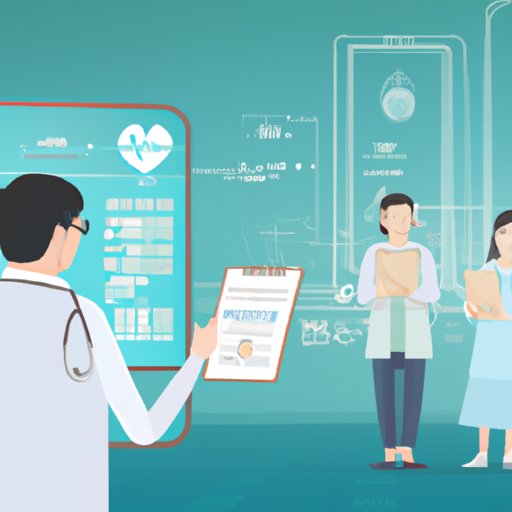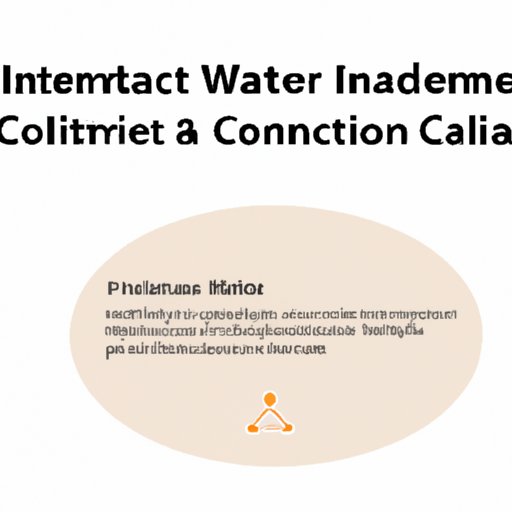
I. Introduction
If you are interested in healthcare or have ever received medical care, you may have heard of Health Information Exchange (HIE). Health Information Exchange, or HIE for short, is a collaboration among healthcare providers involving the exchange of electronic medical records (EMRs) and clinical data. HIE allows healthcare providers to access and share patient information with one another in real-time. This article is a comprehensive guide to Health Information Exchange, its benefits and challenges, and its impact on healthcare delivery and patient outcomes.
II. The Ins and Outs of Health Information Exchange: What You Need to Know
HIE involves the secure sharing of patient medical information across healthcare providers, creating a comprehensive patient record. HIE aims to improve the quality of healthcare and patient outcomes by providing accurate and timely information to healthcare providers.
HIE’s primary purpose is to enhance the coordination of care among healthcare providers, allowing them to provide improved care and reduce medical errors. HIE ensures that all healthcare providers – from primary care physicians to specialists, pharmacists, and hospital systems – have up-to-date information on their patients.
The benefits of HIE include improved patient safety, reduced healthcare costs, better quality of care, and improved patient outcomes. For example, emergency room doctors can access patients’ medical records, improving the speed and accuracy of diagnosis and treatment.
One of the significant challenges faced by HIE is privacy and security concerns. HIE users must meet strict privacy and security standards to protect patient information fully. Additionally, data standardization among healthcare providers can be a significant hurdle.
III. Maximizing Patient Care through Health Information Exchange: A Comprehensive Guide
One of the most significant benefits of HIE is its impact on patient care. HIE improves the quality of care and outcomes by providing accurate and timely medical information. For example, HIE can reduce duplicated tests and procedures, lower the risk of medical errors, and improve treatment outcomes.
Through HIE, healthcare providers can share patient information across different healthcare systems, leading to improved collaboration. They can access lab results, medical histories, and medications, enhancing the coordination of care.
IV. The Future of Healthcare: Health Information Exchange Explained
The future of healthcare is heavily reliant on technology, and HIE is a crucial part of it. HIE enables patients and healthcare providers to have instant access to patient information, regardless of their location. This can lead to improved care outcomes, reduced costs, and enhanced patient experiences.
HIE can improve the use of predictive analytics and big data in healthcare, allowing healthcare providers to predict patient outcomes, monitor, and adjust treatment plans. In the future, HIE can be integrated with other healthcare technologies, such as telemedicine, remote monitoring, and medical wearables, to create a more healthcare technology-efficient ecosystem.
V. Streamlining Healthcare Delivery: Understanding Health Information Exchange
HIE aims to streamline healthcare delivery, from primary care to long-term care. For example, HIE can help healthcare providers access patient information, improve medication management, reduce duplicate testing, and improve care coordination. This can ultimately lead to improved patient outcomes and lowered costs.
HIE can improve healthcare delivery by providing up-to-date and accurate patient information, resulting in faster diagnoses and more targeted treatments. HIE can also lead to improved communication between healthcare providers, enhancing collaboration and teamwork.
VI. Unlocking the Potential of Health Information Exchange: A New Era in Healthcare
HIE has the potential to unlock the full potential of healthcare. Through enhanced collaboration and coordination of care, HIE can help reduce hospital readmissions, lower healthcare costs and improve patient satisfaction.
HIE has the potential to improve population health outcomes by providing healthcare providers with real-time data, allowing them to make informed decisions and improve the quality of care. HIE can also improve public health by providing timely alerts on public health crises and creating a more efficient way of controlling outbreaks.

VII. Collaborative Patient Care: The Role of Health Information Exchange in Improved Outcomes
HIE can improve collaboration and teamwork among healthcare providers, leading to improved patient outcomes. Through HIE, healthcare providers can access accurate and up-to-date patient information, communicate more effectively, and provide more targeted treatments, reducing medical errors.
HIE can improve patient engagement by allowing patients to access their medical information and participate in their care plan. Moreover, patients can access their medical records remotely, making it easier for them to share with their healthcare providers.
VIII. Conclusion
In conclusion HIE, or Health Information Exchange, is a crucial part of modern healthcare delivery. HIE ensures the timely and accurate sharing of medical records and clinical data among healthcare providers, leading to improved collaboration, patient outcomes, and lower healthcare costs. Although privacy and security concerns exist, the benefits of HIE far outweigh its challenges. For patients, it is essential to explore HIE options with their healthcare providers to enhance the quality of care and their experience.





